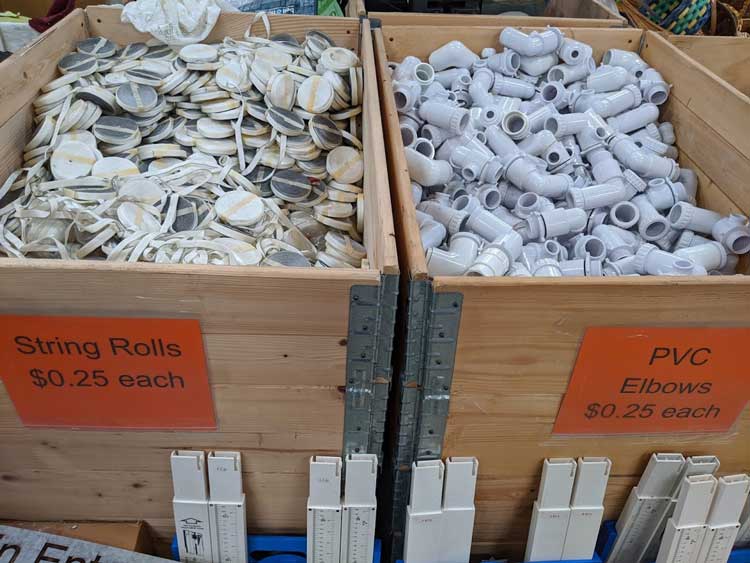
Traveling the Triangle – the Piedmont region of North Carolina bounded by Chapel Hill, Raleigh and Durham – seems like it might be more thrilling than I’d anticipated as I find myself about to take part in something (ominously) called Smashfest at The Scrap Exchange (TSE) in Durham. As I make my approach, I am greeted by the sound of smashing glass.
The Scrap Exchange (TSE)
But far from entering a disaster area, once inside I find myself in the world’s largest creative reuse center, where “make art, not trash” has been its 27-year mission.
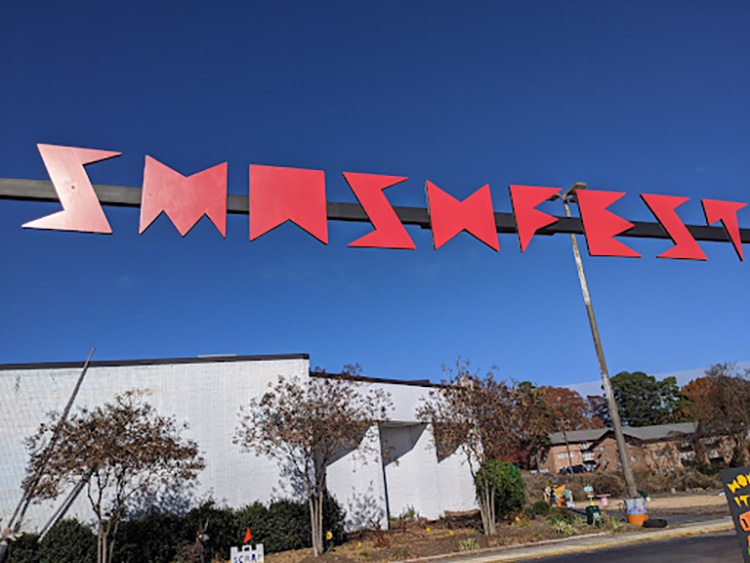
TSE has repurposed an old shopping center and parking lot into an arts district, with an 18,000-square-foot thrift store, and a 20,000-square-foot space called the Reuse Arts Shop, devoted to the creative reuse of every possible material imaginable, available at pennies on the dollar.
Additionally, TSE offers galleries, art classes, meet-ups and a summer camp to serve the community’s need for ongoing environmental activism and creativity.
Best of all, according to an onsite brochure, TSE has kept a staggering 1.4 million pounds of waste out of North Carolina landfills and diverted 70 tons of reusable material from waste streams.

“Once a month, I come here to find excellent painting supplies and framing materials at a fraction of the price, but I don’t want the secret to get out,” says Chapel Hill resident Michele Zembow as she sorts through a stack of matboards in the vast shop.
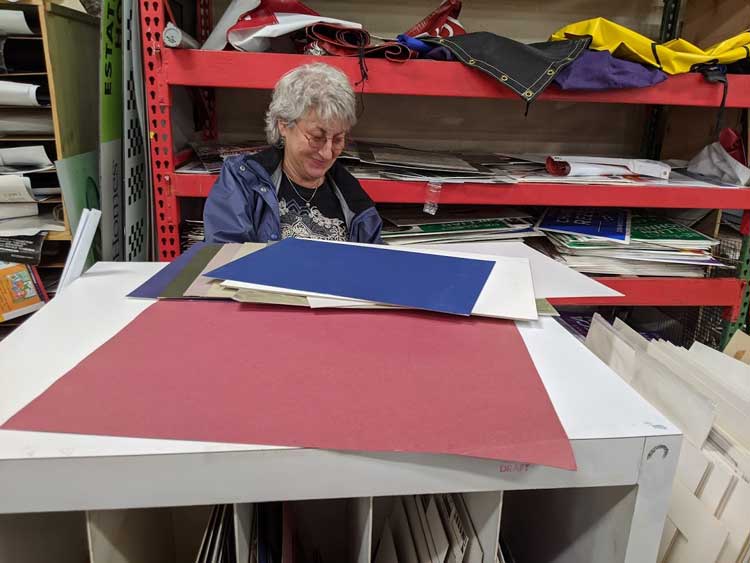

But the secret is out. A line of people wraps around the parking lot, waiting to enter Smashfest. Workers and volunteers set up the annual fundraiser, where you can buy a ticket, pick out a smashable and throw it against a wall.
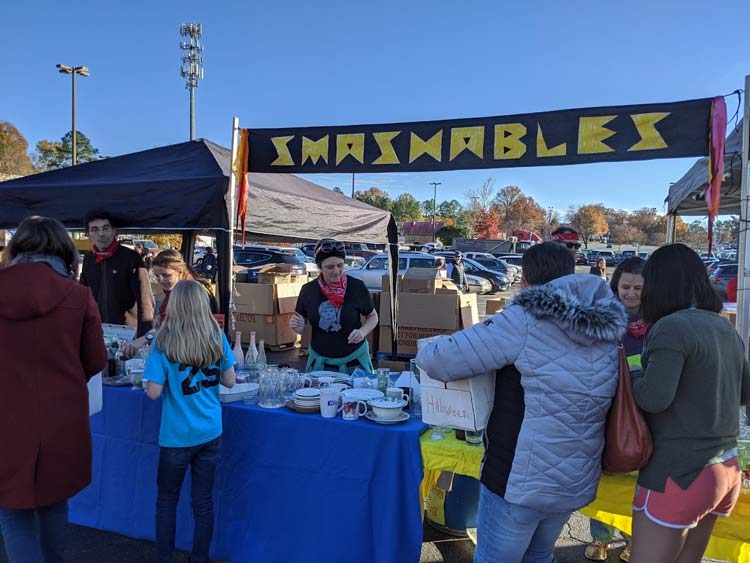

“It’s therapeutic,” says Paola Kipp, who has worked at The Exchange for five years. And the long lines continue, from 3 to 7 p.m., attesting to the need for collective stress release.
I get to let off steam by throwing an old glass jar with all my might and yell, Yeah! And I’m gratified that after Smashfest, the shards of glass, ceramics and every other known breakable material will be swept up and recycled into a marvelous new work of art.
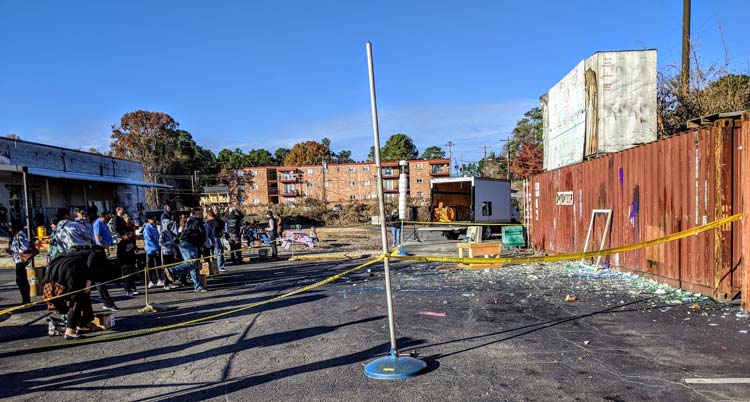
Tar Heel State has Unique Biodiversity
Stress relieved, I continue on my 24-hour tour, heading for blissful immersion in a forest ecosystem that has never been clear-cut within the Chapel Hill city limits. North Carolina is believed to have been nicknamed the Tar Heel State early in its history when it supplied the raw goods for naval stores (tar, pitch, rosin and turpentine).
Its troves of longleaf pine forests are now near extinction. Efforts in recent decades have worked to preserve the state’s unique biodiversity.
“Although an intensely urban region, the Triangle has an abundance of hiking trails and greenways,” notes Triangle resident and longtime environmental leader Molly Diggins. “Some, like the statewide Mountains to SeaTrail and the East Coast Greenway, which pass through the Triangle, are local connections to broader networks.”
My destination is The Piedmont Nature Trails, which are located behind the display gardens of the North Carolina Botanical Garden and are open year-round, 24/7, free of charge. This biodiverse wonderland is maintained by the NCBG which oversees the eradication of invasive species.
Streamside Trail
The Streamside Trail (½ mile loop) crosses the Meeting-of-the-Waters Creek, a meandering stream. Hazelnut and sycamore trees bare their branches, and a downy woodpecker’s trilling breaks the silence and solitude.
Up the hill on the Oak-Hickory Trail (¾ mile loop), the stark outlines of gray barked dogwood, beech and oak branches tangle alongside each other, while underfoot abundant moss grows on rocks and exposed tree roots.
Heart-shaped little brown jug leaves peak though a carpet of fallen leaves. Turkey tail mushrooms splay on decomposing wood. Elephant Rock Trail (one mile) extends up through scented evergreens and hickory.
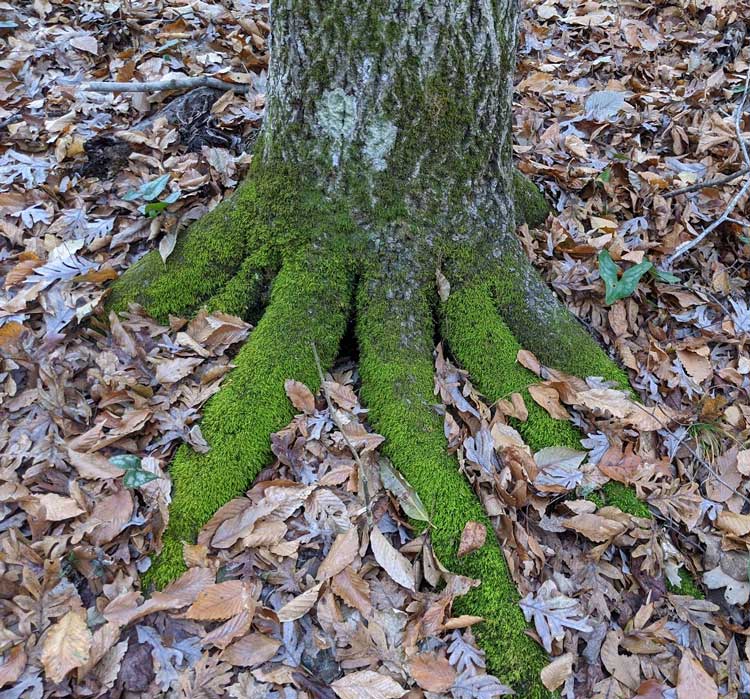
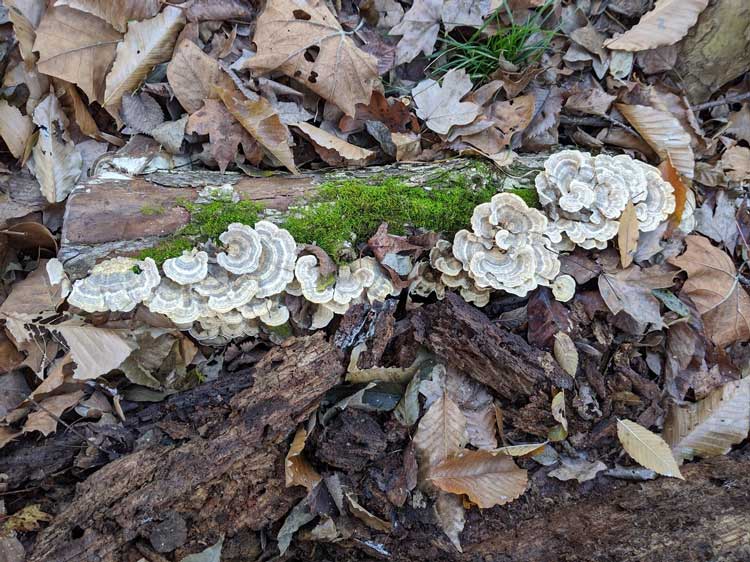
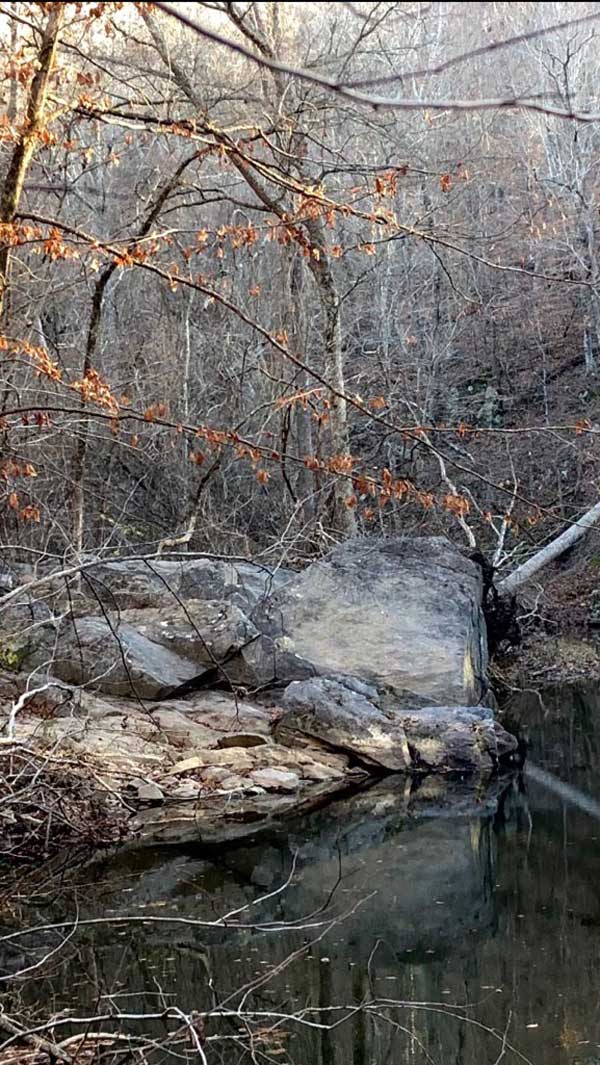
North Carolina Museum of Natural Science in Raleigh
I want to deepen my knowledge about this visual splendor, so I head to one of the most-popular science museums in the United States, the North Carolina Museum of Natural Sciences in Raleigh.
It is also the oldest museum in the state, although there’s nothing relic-like about the high-tech exhibits and multiple open research laboratories. Like all of the state’s museums, admission is free.
It is particularly geared to inspire a love of science among young people, but I, too, enjoy petting a native creature in a live demonstration. I learn that not only does North Carolina have a state reptile, but it’s the only species of turtle that can retract its head and legs, and also close up its shell with a single hinge, giving new meaning to the phrase, environmental protection.
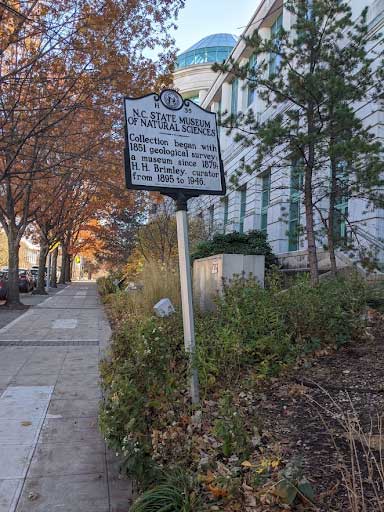
My daylong visit to the Triangle turns out to be both exciting and educational. The three cities, with a combined population of about 800,000, are home to world-class universities and one of the largest research and development parks in the United States.
I discover that this tri-city region has an eco-friendly heartbeat, and I enjoy that pulse throughout my travels.
If You’re Thinking of Traveling to The Triangle:
Piedmont Nature Trails
North Carolina Botanical Garden
100 Old Mason Farm Road
Chapel Hill, NC 27517
https://ncbg.unc.edu/
North Carolina Museum of Natural Sciences
11 West Jones Street
Raleigh, NC 27601-1029
naturalsciences.org
The Scrap Exchange
Lakewood Shopping Center
2059 Chapel Hill Rd.
Durham, NC 27707
Scrapexchange.org
Map of seven hiking trails in the Triangle:
https://indyweek.com/guides/archives/triangle-lots-great-hiking-trails.-seven-favorites./
You can receive daily postings of free events, environmentally-related and otherwise, in the Triangle by subscribing to: https://triangleonthecheap.com/
- Palawan Perfection: Exploring the Philippines’ Last Ecological Frontier - July 13, 2025
- A Journey to Ashland, Oregon’s Shakespeare Festival - July 13, 2025
- The Ultimate Guide to Cairo’s Top Three Museums: Which Should You Visit? - July 12, 2025
